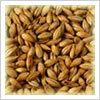Novidades da empresa

 Ireland: Imports of malt, barley, wheat and maize decrease in 2021
Ireland: Imports of malt, barley, wheat and maize decrease in 2021
Republic of Ireland’s imports of malt, barley, wheat and maize decreased in 2021. Barley imports dropped by almost 18%, while wheat imports declined by nearly 15%. Maize imports only declined by 9% in the same time, the Irish Farmers Journal reported on February 20.
Malt imports took the biggest drop, although over a much smaller tonnage than the other three grains listed above.
Malt imports totalled 4,929 tonnes in 2021, down 79% on the year previous.
The majority of the grain imported is used for animal feed. However, at least 120,000 tonnes of maize is estimated to be used in Irish whiskey production, while some barley may also be used in the production of drinks. The majority of malt is destined for the drinks industry.
In total, 171,023 tonnes of barley (unmilled) was imported into the Republic of Ireland in 2021, down 17.7% from 201,364 tonnes in the year previous.
The majority of barley (67% or 115,000 tonnes) came from Great Britain, while 19% (32,612 tonnes) crossed the border from Northern Ireland.
However, it is likely that much of this barley was not produced in Northern Ireland, but was transported from a port. A further 10% (18,486 tonnes) came from France.
As mentioned above, malt (including malt flour) imports took a dramatic drop in 2021, declining by 78% from 23,357 tonnes in 2020 to 4,929 tonnes in 2021.
Imports increased dramatically in 2019 to 66,507 tonnes (up from 27,164 tonnes on 2018) following an incident and subsequent repairs at Boortmalt’s maltings plant in Athy.
The return to lower levels may be a sign of a change in the industry, parts of which now realise it is no longer sustainable to import malt into this country.
Netherlands and Great Britain accounted for a significant amount of the malt imports at 38% and 36% respectively, while 23% of malt imports travelled from Northern Ireland.
Looking at the figures, it is clear that there are discrepancies in the data. For instance, we see a large amount of grain coming from Northern Ireland, but this grain is not all produced in Northern Ireland – it most likely arrived at a port there and then travelled to the Republic of Ireland.
It should be noted that the data is raw data supplied by the Central Statistics Office (CSO) and may be subject to change.
Voltar
E-malt.com, the global information source for the brewing and malting industry professionals. The bi-weekly E-malt.com Newsletters feature latest industry news, statistics in graphs and tables, world barley and malt prices, and other relevant information. Click here to get full access to E-malt.com. If you are a Castle Malting client, you can get free access to E-malt.com website and publications. Contact us for more information at marketing@castlemalting.com .





